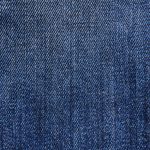Are you in search of high-quality linen fabric? Look no further! In this article, we will guide you on how to recognize the good quality of linen fabric.
By understanding its characteristics, evaluating the thread count, weight, and thickness, inspecting the weave and texture, checking for natural and sustainable fibers, examining the color fastness and dyeing techniques, as well as testing its durability and longevity, you’ll be equipped with the knowledge to make an informed choice when it comes to purchasing linen fabric.
Table of Contents
Understanding the Characteristics of High-Quality Linen Fabric
You’ll be able to recognize high-quality linen fabric by its durability and natural breathability. When evaluating color options, it’s important to choose linen fabric that has been dyed using high-quality dyes. Look for vibrant, long-lasting colors that don’t fade easily.
High-quality linen fabric is also resistant to wrinkling, making it easy to care for and maintain. To ensure the longevity of your linen fabric, it’s essential to understand fabric care. Linen fabric should be washed using gentle detergents and cold water to prevent shrinkage. Avoid using bleach or harsh chemicals that can damage the fabric.
After washing, air drying is recommended to maintain the fabric’s natural properties. Ironing may be necessary to remove any wrinkles, but it’s important to use a low heat setting to avoid scorching the fabric.
Evaluating the Thread Count of Linen Fabric
When evaluating the thread count of linen fabric, it is important to understand its significance in determining the quality and durability of the fabric. A higher thread count generally indicates a denser and more tightly woven fabric, which can result in a smoother and more luxurious feel.
Additionally, the weave type plays a crucial role in the overall quality of the linen fabric, as different weaves can affect the fabric’s strength, breathability, and drape.
Lastly, the fiber quality of the linen used can greatly influence the final product, with long and fine fibers typically producing a higher quality fabric that is softer, more lustrous, and less prone to pilling.
Thread Count Significance
To determine the quality of linen fabric, it’s important to understand the significance of thread count. Thread count refers to the number of horizontal and vertical threads per square inch of fabric. It is commonly believed that a higher thread count indicates better quality fabric, but this is not always the case. While a higher thread count can provide a smoother and softer feel, it does not necessarily mean the fabric is of superior quality. Evaluating fabric quality involves considering other factors such as the type of linen used, the weave, and the finishing techniques. To help you better understand the importance of thread count, here is a table that illustrates the relationship between thread count and fabric quality:
| Thread Count | Fabric Quality |
|---|---|
| 200-400 | Medium |
| 400-600 | Good |
| 600+ | Excellent |
Weave Type Importance
The weave type of linen is an important factor to consider when evaluating its overall quality. The weave pattern determines the fabric’s construction and directly impacts its durability and texture.
Linen can be woven in various patterns, such as plain, twill, and satin weaves. The most common weave for linen is the plain weave, where the threads crisscross evenly, creating a simple, balanced pattern. This weave is known for its strength and durability.
On the other hand, twill weaves, like herringbone or houndstooth, create a diagonal pattern, adding texture and visual interest to the fabric. Satin weaves, with their smooth and shiny surface, give linen a luxurious feel.
When evaluating the quality of linen, consider the weave type and choose one that suits your preferences and needs.
Fiber Quality Influence
Consider the influence of fiber quality on the overall value and durability of your chosen linen weave.
When it comes to linen, fiber strength is a crucial factor to consider. Stronger fibers result in a fabric that is more resistant to wear and tear, ensuring that your linen fabric lasts longer. Additionally, fiber strength also affects the fabric’s ability to hold its shape and resist stretching, making it a great choice for garments that require structure.
On the other hand, fabric softness is another important aspect to look for in linen. Softer fibers create a fabric that is more comfortable to wear against your skin. They also contribute to the overall drape and flow of the fabric, enhancing its visual appeal.
Therefore, when choosing your linen fabric, be sure to consider both fiber strength and fabric softness to ensure you get the best quality and durability.
Assessing the Weight and Thickness of Linen Fabric
Assessing the weight and thickness of linen fabric can be done by simply feeling it with your hands. When evaluating the weight of linen fabric, you should take note of its heaviness. Quality linen fabric tends to have a substantial weight, indicating a higher thread count and denser weave. On the other hand, if the fabric feels light and flimsy, it may be a sign of lower quality.
Thickness examination is another important aspect when assessing linen fabric. Run your fingers over the fabric and pay attention to how it feels. High-quality linen fabric will have a smooth and even texture, with no bumps or irregularities. It should also feel substantial and have a slight stiffness, indicating a good drape when used for garments or home decor.
In addition to weight and thickness, there are a few other factors to consider when evaluating linen fabric:
-
Look for a tight and uniform weave: Quality linen fabric will have a tight weave with no gaps or loose threads.
-
Check for wrinkles: Linen fabric is known for its natural tendency to wrinkle, but high-quality linen will have fewer wrinkles and will be easier to press.
-
Consider the sheerness: Hold the fabric up to the light to see if it is too sheer or transparent. Quality linen should have a moderate level of opacity.
Inspecting the Weave and Texture of Linen Fabric
When it comes to assessing the quality of linen fabric, there are a few key points to consider.
First, you’ll want to inspect the weave of the fabric, looking for indicators of quality such as a tight and even weave.
Next, pay attention to the texture of the fabric, feeling for a smooth and consistent feel.
Lastly, consider the durability of the linen, evaluating factors such as its resistance to fraying or tearing.
Weave Quality Indicators
One way to determine the good quality of linen fabric is by examining the weave indicators. The weave tightness of linen fabric plays a crucial role in its overall quality. A tightly woven fabric indicates a higher level of craftsmanship and attention to detail.
When examining the weave, look for:
-
Consistency: A high-quality linen fabric will have a consistent and uniform weave pattern. Irregularities or inconsistencies may indicate lower quality.
-
Density: A tightly woven linen fabric will have a higher thread count per square inch, resulting in a stronger and more durable fabric.
-
Smoothness: Run your hand over the fabric to feel for any rough or uneven areas. A smooth and even texture indicates a well-made linen fabric.
Identifying Fabric Texture
To identify the texture of the fabric, run your fingers over it and feel for any rough or uneven areas. Pay attention to the overall feel of the fabric. Is it smooth and soft, or is it rough and coarse? This can give you a clue about the quality of the fabric. Good quality fabrics usually have a smooth and luxurious texture.
In addition to texture, you can also identify fabric patterns. Look closely at the fabric and see if there are any distinct patterns or designs. This can help you determine the type of fabric and its quality. High-quality fabrics often have well-defined and intricate patterns.
Another important factor to consider is determining fabric shrinkage. Gently pull the fabric from both ends and see if it stretches or shrinks. Fabrics that shrink easily may not be of good quality and may not withstand frequent washing.
Assessing Linen’s Durability
Assessing Linen’s durability can be done by examining how well it holds up to frequent use and washing.
Linen, known for its strength, breathability, and resistance to wrinkling, is a popular choice for clothing and household textiles.
To evaluate linen’s breathability, consider its ability to allow air to flow through the fabric, keeping you cool and comfortable. A tightly woven linen may not be as breathable as a more loosely woven one.
Analyzing linen’s resistance to wrinkling involves observing how well it maintains its smooth appearance after being washed and worn. Look for minimal creasing and wrinkling to ensure durability.
Additionally, pay attention to the fabric’s ability to withstand repeated washing without losing its integrity or becoming excessively worn.
Checking for Natural and Sustainable Fibers in Linen Fabric
When checking for natural and sustainable fibers in linen fabric, it’s important to look for certifications that guarantee the fabric’s authenticity. Evaluating the environmental impact of linen production is crucial in making an informed decision about the fabric’s sustainability.
One key aspect to consider is the water usage during cultivation and processing. Linen is made from flax plants, which require significantly less water compared to other fibers like cotton. Organic linen options are also available, which are produced without the use of synthetic pesticides or fertilizers. Look for certifications such as the Global Organic Textile Standard (GOTS) or the Organic Content Standard (OCS) to ensure that the linen fabric is truly organic. These certifications verify that the entire production process, from cultivation to processing, meets strict organic standards.
Additionally, consider the dyeing and finishing processes used for the linen fabric. Opt for low-impact dyes that minimize chemical use and wastewater pollution. Look for certifications like the Bluesign® System or the Oeko-Tex® Standard 100 to ensure that the fabric is free from harmful substances.
Examining the Color Fastness and Dyeing Techniques of Linen Fabric
Examining the color fastness and dyeing techniques of linen fabric can help determine its longevity and environmental impact.
When it comes to assessing the quality of linen fabric, one important aspect to consider is its colorfastness. This refers to the fabric’s ability to retain its original color even after being subjected to various forms of washing, light exposure, and rubbing. High colorfastness indicates that the fabric will maintain its vibrant hue over time, making it a more durable and long-lasting option.
In addition to colorfastness, the dyeing techniques used in the production of linen fabric can also provide valuable insights into its quality. The dyeing process affects not only the color but also the overall performance and environmental impact of the fabric. It is important to look for linen fabric that has been dyed using eco-friendly and sustainable dyeing techniques. This ensures that harmful chemicals are not released into the environment during the production process, making it a more environmentally friendly choice.
To determine the colorfastness and dyeing techniques of linen fabric, consider the following:
- Check the fabric label or product information for details on colorfastness and dyeing techniques used.
- Research the reputation of the manufacturer or brand in terms of their commitment to sustainable and eco-friendly practices.
- Seek out certifications or seals of approval from recognized organizations that verify the fabric’s quality and adherence to sustainable dyeing techniques.
Testing the Durability and Longevity of Linen Fabric
To test the durability and longevity of linen fabric, it’s important to consider factors such as its resistance to tearing, fraying, and pilling. When evaluating the quality of linen, you should also test its breathability and moisture wicking properties.
Linen is known for its ability to keep you cool and comfortable, making it a popular choice for summer clothing. To test its breathability, hold the fabric up to your mouth and try to blow air through it. If the fabric allows air to pass through easily, it is considered breathable. Additionally, you can test the moisture wicking properties by pouring a small amount of water on the fabric and observing how quickly it absorbs and dries.
Another important factor to consider is the wrinkle resistance and easy care characteristics of linen fabric. Linen is naturally prone to wrinkling, but high-quality linen will have better wrinkle resistance. To evaluate this, crumple a small section of the fabric in your hand and then release it. If the fabric quickly smooths out and the wrinkles disappear, it is likely to have good wrinkle resistance. Additionally, consider the care instructions provided by the manufacturer. High-quality linen fabric will be easy to care for and may require minimal ironing or special treatment.
Conclusion
In conclusion, when it comes to recognizing the good quality of linen fabric, there are several key factors to consider.
By understanding the characteristics of high-quality linen, evaluating the thread count, assessing the weight and thickness, inspecting the weave and texture, checking for natural and sustainable fibers, examining the color fastness and dyeing techniques, and testing the durability and longevity, you can ensure that you are getting a top-notch linen fabric.
So, take the time to carefully evaluate these aspects before making your purchase to ensure you are getting the best quality linen fabric available.
- How Does Ring Spun Cotton Affect Garment Fit and Shape Retention? - August 13, 2024
- What Are the Challenges in Producing Ring Spun Cotton? - August 13, 2024
- Is Ring Spun Cotton Suitable for Plus-Size Clothing? - August 13, 2024





